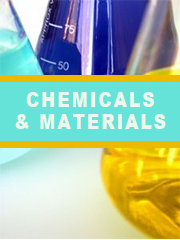TOP CATEGORY: Chemicals & Materials | Life Sciences | Banking & Finance | ICT Media

Download Report PDF Instantly
Report overview
The global Membrane Chlor-alkali market was valued at US$ 466.3 million in 2022 and is projected to reach US$ 522.1 million by 2029, at a CAGR of 1.6% during the forecast period. The influence of COVID-19 and the Russia-Ukraine War were considered while estimating market sizes.
Chlor-alkali Ion Exchange Membrane is used in electrolyzers at electrolysis plants in which brine is decomposed. It plays a key part in manufacturing caustic soda (sodium hydroxide)/caustic potash (potassium hydroxide), chlorine, and hydrogen-basic chemical products required in our daily lives. The chlor-alkali processes rely on an ion-exchange membrane to separate the sodium and chloride ions of the sodium chloride.
A membrane caustic soda plant with manufacturing capacity of 10 K MT demands 300 sq.m Chlor-alkali Ion Exchange Membrane. The replacement cycle of the membrane is usually 2.5-4 years.
This report aims to provide a comprehensive presentation of the global market for Membrane Chlor-alkali, with both quantitative and qualitative analysis, to help readers develop business/growth strategies, assess the market competitive situation, analyze their position in the current marketplace, and make informed business decisions regarding Membrane Chlor-alkali. This report contains market size and forecasts of Membrane Chlor-alkali in global, including the following market information:
Global Membrane Chlor-alkali Market Revenue, 2018-2023, 2024-2030, ($ millions)
Global Membrane Chlor-alkali Market Sales, 2018-2023, 2024-2030, (K MT)
Global top five Membrane Chlor-alkali companies in 2022 (%)
Global chlor-alkali ion exchange membrane market is highly concentrated, with three company dominated the global market. Asahi Kasei is the largest player in the market, with volume share reached to 46%. Chemours has more customers in American and European market, while AGC is more welcomed in developing regions.
We surveyed the Membrane Chlor-alkali manufacturers, suppliers, distributors and industry experts on this industry, involving the sales, revenue, demand, price change, product type, recent development and plan, industry trends, drivers, challenges, obstacles, and potential risks.
Total Market by Segment:
Chapter 1: Introduces the definition of Membrane Chlor-alkali, market overview.
Chapter 2: Global Membrane Chlor-alkali market size in revenue and volume.
Chapter 3: Detailed analysis of Membrane Chlor-alkali manufacturers competitive landscape, price, sales and revenue market share, latest development plan, merger, and acquisition information, etc.
Chapter 4: Provides the analysis of various market segments by type, covering the market size and development potential of each market segment, to help readers find the blue ocean market in different market segments.
Chapter 5: Provides the analysis of various market segments by application, covering the market size and development potential of each market segment, to help readers find the blue ocean market in different downstream markets.
Chapter 6: Sales of Membrane Chlor-alkali in regional level and country level. It provides a quantitative analysis of the market size and development potential of each region and its main countries and introduces the market development, future development prospects, market space of each country in the world.
Chapter 7: Provides profiles of key players, introducing the basic situation of the main companies in the market in detail, including product sales, revenue, price, gross margin, product introduction, recent development, etc.
Chapter 8: Global Membrane Chlor-alkali capacity by region & country.
Chapter 9: Introduces the market dynamics, latest developments of the market, the driving factors and restrictive factors of the market, the challenges and risks faced by manufacturers in the industry, and the analysis of relevant policies in the industry.
Chapter 10: Analysis of industrial chain, including the upstream and downstream of the industry.
Chapter 11: The main points and conclusions of the report.